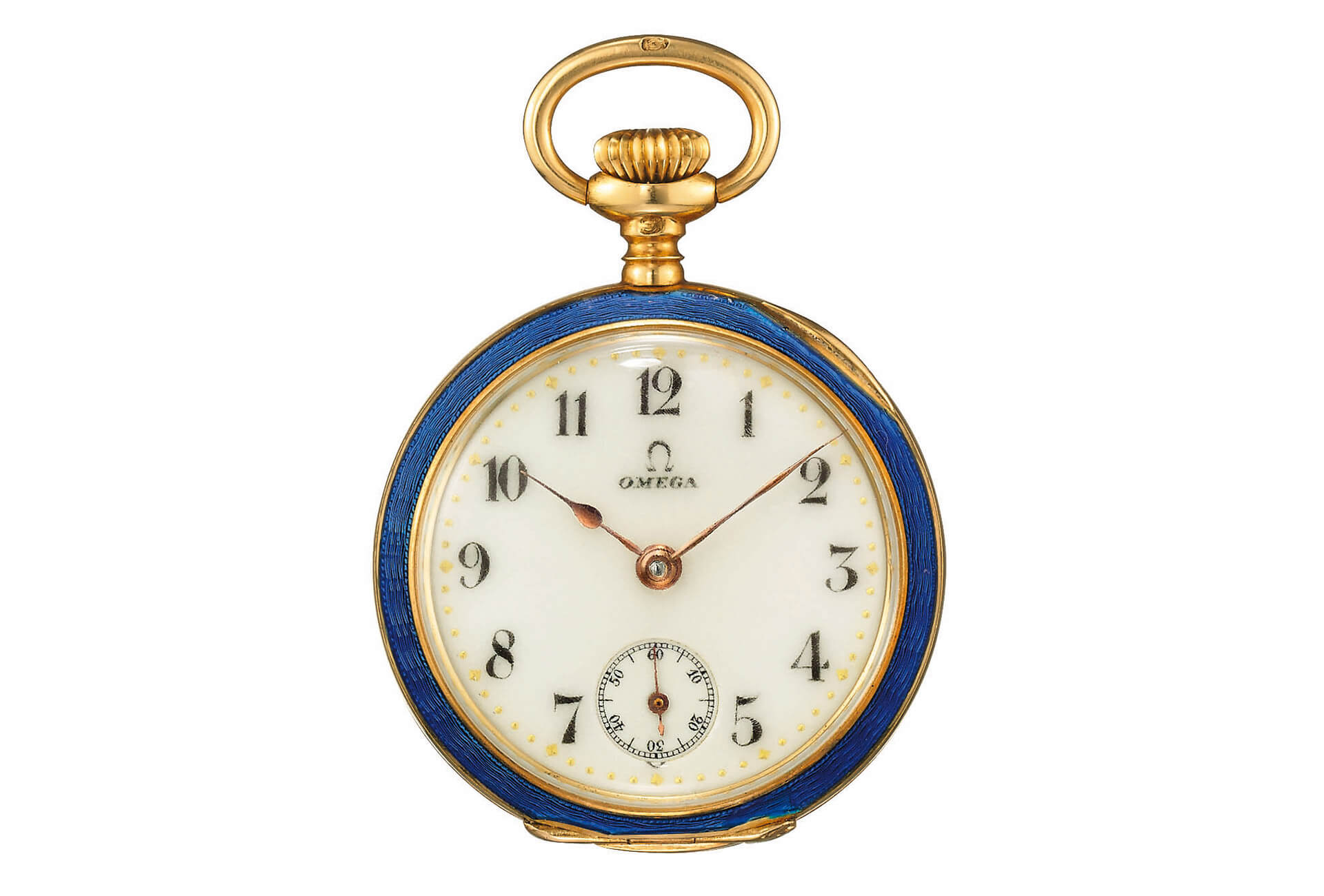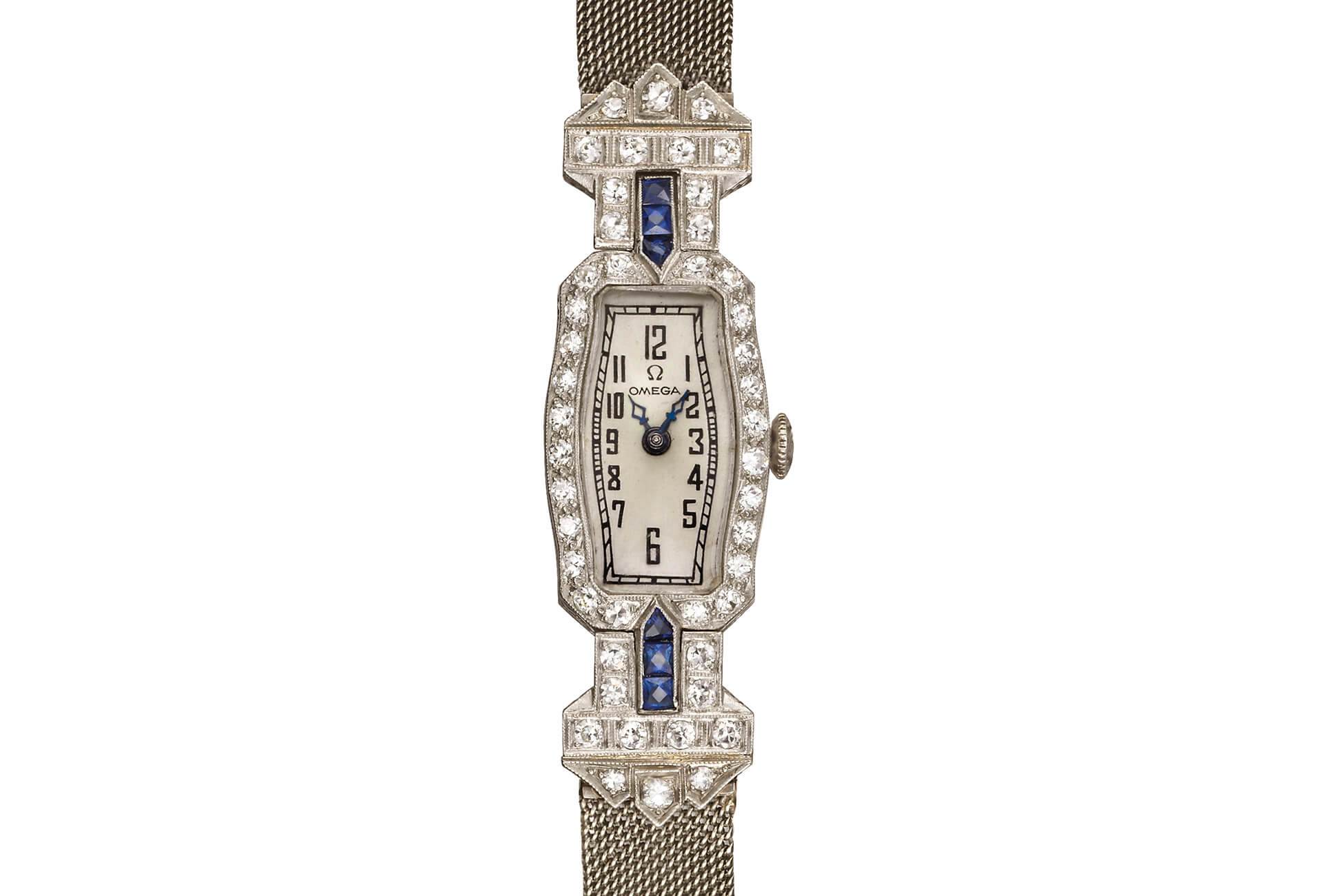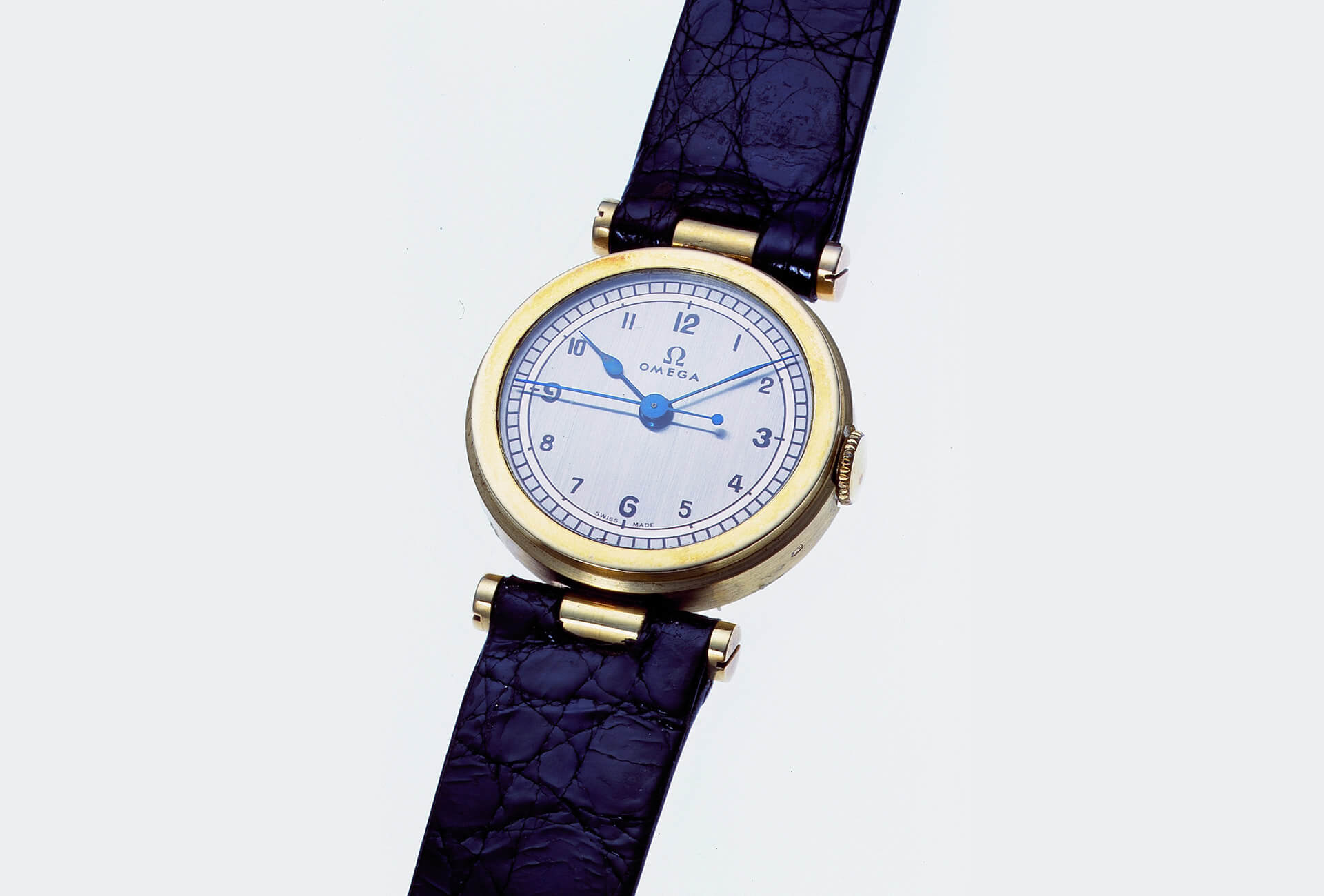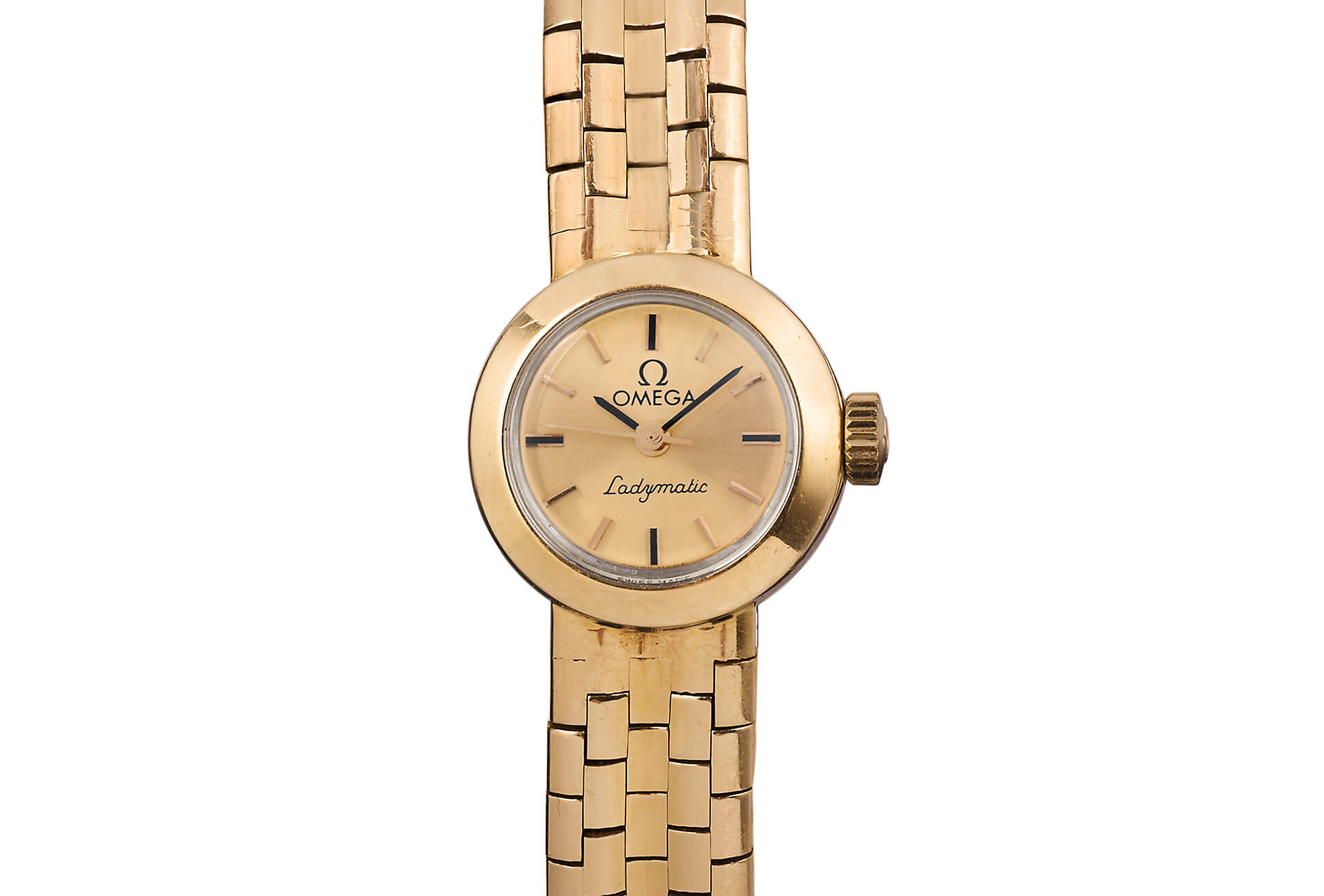Close your eyes, think of Omega, and what do you see? Beautiful watches and brand ambassadors? No doubt, but many of us may also imagine the first Moon landing, Olympic scoreboards, and James Bond. As the trusted chronometer for NASA astronauts, the Official Timekeeper for the International Olympic Committee, and the favourite watch brand since 1995 of the world’s most debonair spy, Omega has long proved its accomplishments in situations of conquest, tenacity and seduction. But all this is a bit, well…virile.
With a brilliant display of 70 exhibits, from a wristwatch more than 100 years old to the 2017 Seamaster Aqua Terra 38 for ladies, powered by Omega’s Master Chronometer Calibre 8800, “Her Time” takes us on an enlightening journey over the decades to set the record straight and show us that, just as for men’s watches, precision and style have always been at the forefront of Omega timepieces for ladies.
A ladies’ model "de précision"
The exhibition progresses chronologically, beginning with the pocket watch era, when from 1894 to 1910 the development of smaller movements paved the way for decorated women’s watches, followed by wristwatches. When in 1900 Omega became one of the first brands to commercialize the wristwatch, women were quick to adopt this new style whereas men were still attached to their pocket watches, at least until the war years when they opted for the more practical wrist model. One of the first and oldest wristwatches on show is a strapped evolution of a Lépine pendant watch from 1906, with the crown and 12 o’clock positioned where we now have 3 o’clock.
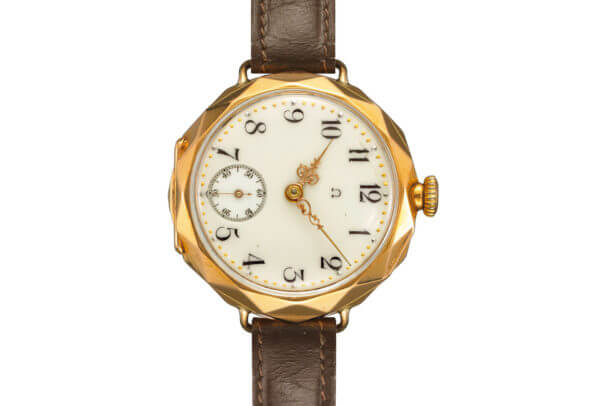
Carrying on, a Parisian advertisement from 1908 shows us a ladies’ model “de précision” with an extensible bracelet, while a 1914 leaflet presents five different models for “Five O’Clock Tea”. The offer for ladies quickly expanded as Omega continued to propose Lépine pendants alongside the development of wristwatches. A magnificent example is the Art Nouveau pendant from 1910, with Paris-style Arabic numerals, poire hands and a blue translucent enamel case back with gold netting and 16 diamonds that stuns with its perfectly simple dial and elaborate decoration.
Moving on from 1926 to 1949, the aesthetics of the Art Deco period inspired superb new geometric case shapes that required new movements inside — Omega was not a brand to place a round movement inside a square-shaped case. Fashion posters inform us that this period also brought shorter sleeves, and wristwatches dressed up accordingly to flatter newly-exposed wrists: an Art Deco design from 1940 covered its rectangular-shaped, platinum case with diamonds and blue sapphires. In an entirely different register, the Medicus watch, introduced during the same period, in 1937, was Omega’s first wristwatch ever with a central seconds hand, and was specially designed for nurses.
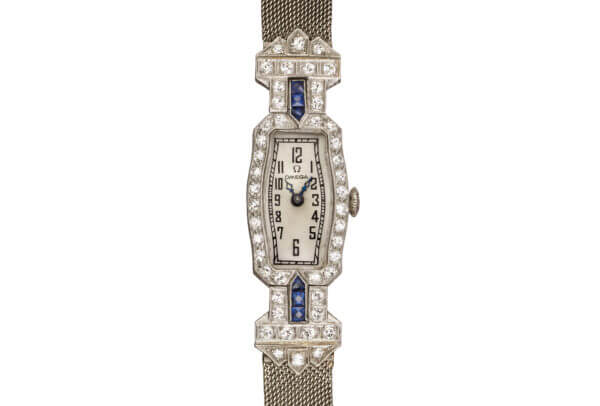
The creative and glamorous 1940s and 50s made Paris the centre of the fashion world. Ever attentive to women’s styles and tastes, Omega collaborated with the major French couture houses, and in 1946 the brand launched the first wristwatch ever with an extendable “Tubogas” bracelet, admired and soon adapted by other brands. Constructed in red gold and inspired by the bendable tubes used for gas supply in homes, the watch is immortalized in an advertisement by the era’s leading fashion illustrator René Gruau, who, after describing the precision records achieved by the brand for 14 years in a row, tells us that the “union of precision and aesthetics is the privilege of all Omega creations”.
"A women is as active as a man"
By 1951, sign of the times, Omega’s advertising messages clearly defend gender equality. “In all facets of life, a woman is just as active, sporty, and as busy as a man. Like him, she demands a watch for precision,” reads one. The statement was a promise of good things to come, and in 1953 the brand delivered what was then the smallest rotor-equipped movement in the world – the Omega Calibre 455. It powered the first Omega Ladymatic, launched two years later.
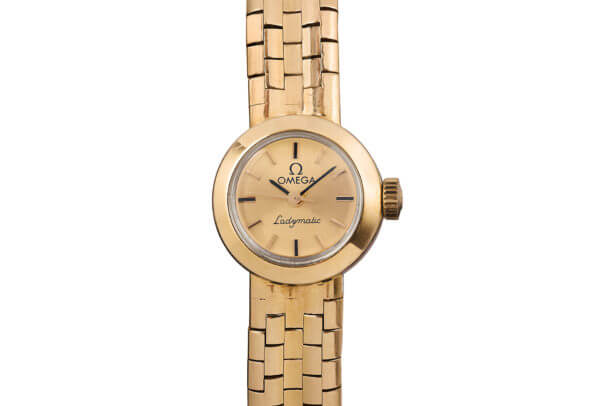
Parallel to these technical developments, Omega designed and created outstanding jewellery watches. The Omega “Flowers” jewellery secret watch was the first ever timepiece made of mauve gold; an original design from 1955 that was set with diamonds. Another example is the 1956 Omega Topaz Jewellery “Secret Watch” that absolutely dazzles with 21 triangular baguette-cut orange topazes surrounding the dial, completed with 31 brilliant-cut diamonds set on the cover and loop. Yet another, the exquisite 1974 Omega Moldavita pendant watch in 18K yellow gold and platinum combined with moldavite formed by a meteorite impact, was equipped with the smallest automatic movement. Many secret watches were made in collaboration with renowned designers, a trend that continued into the 1960s and 70s when experimentation, colour and creativity were at a peak.
The decades continue, from the Omega Constellation Star timepiece of 1992 through to the Seamaster Aqua Terra, De Ville Prestige, Ladymatic and Constellation collections of today. Based on its rich heritage, Omega continues to develop ladies’ watches with the highest standards of precision and style. The latest models tell us that while gold and diamonds are still desirable, ceramic and functions are equally appreciated, and that, once again reflecting the changing times, Omega watches will always know how to accompany the different facets of every lady’s personality.
The Omega “Her Time” Exhibition is planning new destinations throughout 2018, to be announced.









